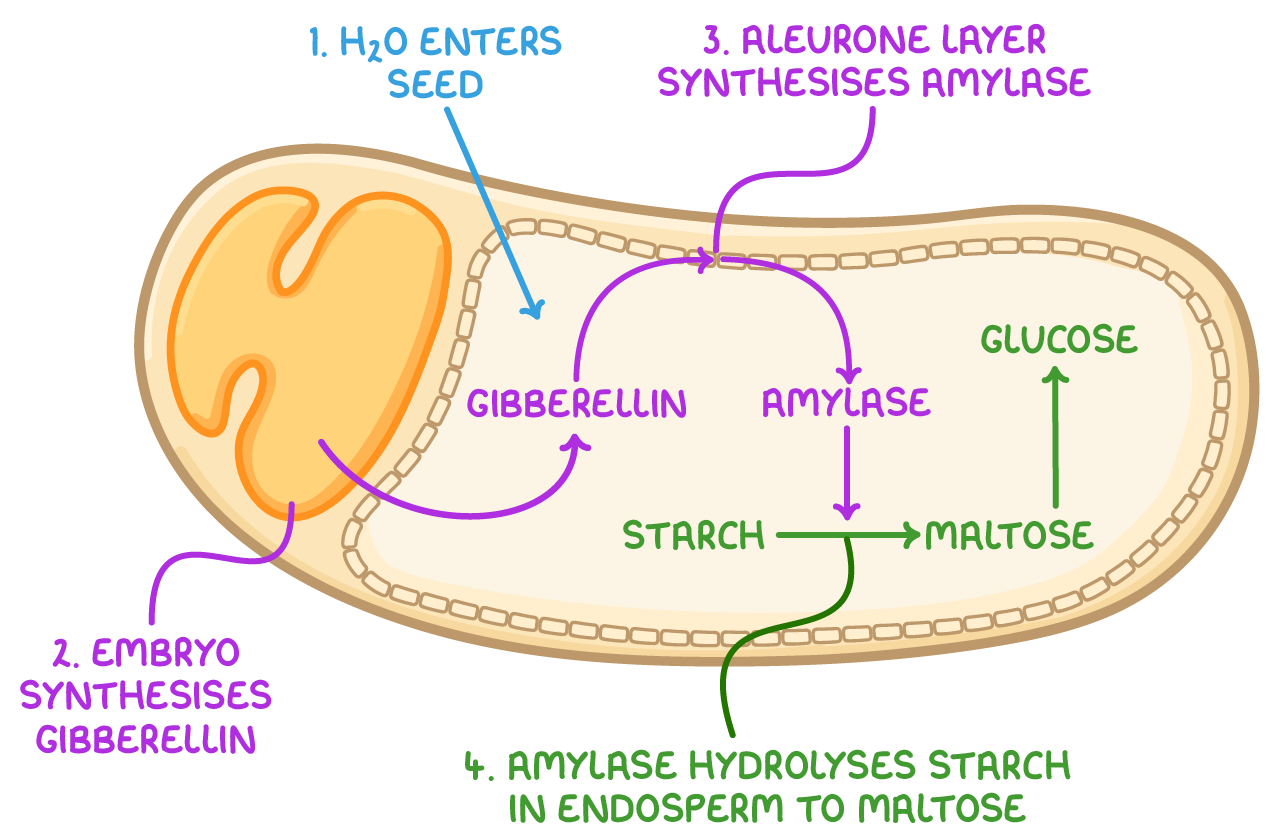Chemical Communication in Plants: Gibberellins
This lesson covers:
- What gibberellins are
- How gibberellins are synthesised
- How gibberellins enable stem growth
- The role of gibberellins in seed germination
- Regulation of amylase synthesis for starch breakdown
What are gibberellins?
Gibberellins are plant growth regulators that stimulate seed germination and regulate plant height via stem growth.
Some of the processes they are involved in include:
- Stem and leaf growth
- Seed germination
- Fruit development
Where gibberellins are synthesised
Gibberellins are synthesised in various plant tissues. The highest levels of gibberellins are typically observed in immature and actively growing plant structures, reflecting their role in the plant's development.
They are found in particularly high concentrations in:
- Young leaves
- Seeds
- Stems
How gibberellins enable stem growth
Gibberellins contribute to stem growth primarily by stimulating the action of specific 'XET' enzymes.
Action of XET enzymes:
- XET enzymes break bonds in plant cell walls.
- This leads to a loosening of the hemicellulose network that interlinks with cellulose microfibrils.
- Cellulose microfibrils within the cell walls separate.
- The plant cell walls stretch and expand.
- The stem elongates.
The role of gibberellins in seed germination
Seeds in their mature state exhibit a condition known as dormancy, which is a period of inactivity that allows the seed to withstand various adverse environmental conditions.
Gibberellins play a crucial role in ending this dormant state by initiating the germination process.
This involves a few key structures:
- The embryo - This is the developing plant.
- The endosperm - This is an energy store that surrounds the embryo within the seed, containing the polysaccharide starch.
- The aleurone layer - This is a protein-rich layer on the outer edge of the endosperm in a seed.

The process of germination occurs as follows:
- Water enters the seed.
- The absorption of water by the seed leads to the synthesis of gibberellins by the embryo, and these gibberellins travel from the embryo to the aleurone layer.
- In response, the aleurone layer begins to synthesise amylase and maltase enzymes.
- The amylase enzymes hydrolyse the starch stored in the endosperm into maltose.
- This can then be broken down into glucose, which provides the embryo with sugars essential for energy and growth.
Through this mechanism, gibberellins activate the mobilisation of stored starch reserves, starting the germination process.
Regulation of amylase synthesis for starch breakdown
Gibberellins orchestrate the regulation of the genes responsible for amylase production.
This occurs in the following stages:
- Gibberellins bind to specific receptors.
- This promotes the degradation of DELLA proteins, which normally inhibit factors that promote gene transcription.
- The removal of this inhibition increases transcription of mRNA coding for amylase.
- More amylase is synthesised.
This process demonstrates control over the mobilisation of starch reserves, ensuring that energy is available for the seedling as it begins to grow.